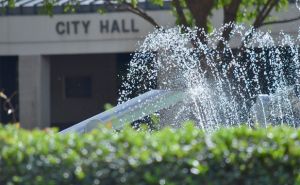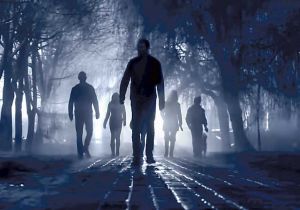The Senoia City Council at its Feb. 6 meeting unanimously approved the city’s 20-year Parks and Recreation Master Plan designed to address a large volume of issues related to active and passive recreation. The plan was generated after a year of planning, surveys and meetings.
It is an ambitious plan for parks and recreation in Senoia that would add substantially to the family-friendly landscape in coming years. The total cost of the long-range City of Senoia Parks and Recreation Master Plan ws established at $25.9 million.
As noted in the initial section of the 20-year plan, the purpose was to provide a reflection of the community’s objectives, needs and priorities for the provision of park space and supporting facilities. As such, it serves as a guide for the formulation of local policy and supports and decision-making process to address both the quality and location of recreational opportunities to meet the needs of Senoia’s future population.
The significance of the plan as a tool for future parks and recreation needs is reflected in the projection that the city’s population in 20 years will grow to approximately 9,000. That compares to the 3,307 figure in 2010.
The long-range plan addresses both active and passive recreational needs and includes recommendations for improvements to existing recreation sites, the development of new parks and facilities, land acquisition and capital improvements.
A previous 12-question public survey designed to obtain a better understanding of residents’ recreational needs showed Seavy Street Park was most often used by residents, followed by Marimac Lakes Park, the multi-use trail system and Leroy Johnson Park.
The survey determined that additional facilities needed included multi-use trails, picnic area and indoor multi-purpose space.
Survey results also showed that the greatest need was for improving existing facilities followed by providing additional programs and facilities.
“The most important part was the public input,” said City Administrator Richard Ferry of the year-long process that led to the completed plan.
The plan calls for numerous improvement to the existing park facilities and provides for the addition of two new parks. Plan recommendations also call for the installation of a number of multi-use trails and the ability to potentially purchase additional parkland property.
Proposed enhancements to Seavy Street Park would expand options for outside play and indoor programs and activities, improve the park’s appearance and address drainage issues by replacing the tennis courts with a fountain or pond and erecting a train observation platform.
Recommendations for Leroy Johnson Park include replacing the five ball fields with five others in a new configuration, adding a centrally-located concession/restroom building and 200 parking spaces, tennis courts, a stand-alone ball field and the conversion of the existing senior center to a multi-purpose recreation center and gym. Projected recommendations also include two basketball courts and several additional fields for other sports.
Recommendations for Marimac Lakes Park focus on the area’s natural features and call for nature trails, lakeside trails and a boardwalk to increase pedestrian access. The area around the Stone Lodge would be outfitted with gardens and a gazebo. A connecting trail and roadway to the adjacent Leroy Johnson Park is also a part of the recommendation as is the planting of an orchard near Pylant Street.
New park facilities included in the plan call for the potential for the four-acre Gateway Veterans Park near the downtown area and a “future community park” that would include an indoor aquatic center and other amenities.
The plan’s recommendations were derived from input from the Recreation Plan Steering Committee, city staff, previous plans and studies, the community survey and an assessment of the existing recreation system. Also used in the development of the plan were the guidelines suggested by the National Recreation and Parks Association.
Funding for the ambitious plan would likely come from a number of local, state and federal sources. Among those is the referendum for the countywide one-cent sales tax extension coming before voters in March from which $1.25 million is designated for parks and recreation. The projected costs of all aspects of the plan over the 20-year period would total $25.9 million.
Asked by council members what might result for parks and recreation if the extension of the county SPLOST fails, Ferry said accomplishing those goals would become significantly more difficult.












Leave a Comment
You must be logged in to post a comment.